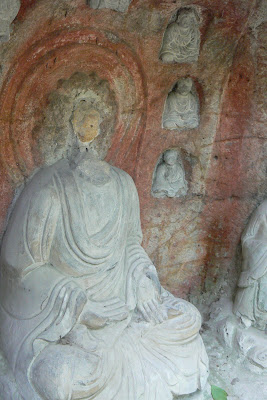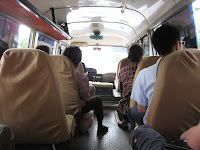 This review covers a restaurant with a rather unlikely name, Xinjiang Rather Go on Expedition A Restaurant. I almost apologize for trotting out Engrish to be laughed at, but it's an accurate translation of the Chinese Name. I assume the restaurant's name makes more sense in Turkish, represented with Arabic characters. Xinjiang is a region in the Northwest of China, with a history and culture more related to Turkey and Central Asia than to China. It's tragic that in more than two years I've only mentioned Xinjiang in the context of the delicious food I get from Xinjiang restaurants.
This review covers a restaurant with a rather unlikely name, Xinjiang Rather Go on Expedition A Restaurant. I almost apologize for trotting out Engrish to be laughed at, but it's an accurate translation of the Chinese Name. I assume the restaurant's name makes more sense in Turkish, represented with Arabic characters. Xinjiang is a region in the Northwest of China, with a history and culture more related to Turkey and Central Asia than to China. It's tragic that in more than two years I've only mentioned Xinjiang in the context of the delicious food I get from Xinjiang restaurants.But I don't really see any reason to stop talking about Xinjiang food, either. Xinjiang food is simple, but makes an excellent alternative to the normal dining scene in Shanghai, where the main alternative to Chinese food is overpriced, poorly-interpreted renditions of Western food. This particular Xinjiang restaurant is very popular with foreigners, who at night will invariably take up a table or two out front - pole position for seeing the restaurant's worker's kids, who turn the sidewalks into a sort of impromptu playground.
Most of the dishes I've tried at the restaurant are decent, but not extraordinary. These noodles are a little on meat and vegetables, and only a very light eater would make an entire meal of it.

But in a way that's fine with me, as the raison d'etre for the restaurant is the Lamb shish kebab, and ordering a few is a must. They're covered in hot pepper, enough to make it spicy rather than hot. They're large and go for a locally expensive thirty five cents apiece. While I'm no shish kebab expert, I consider these the best in town:

They're grilled outside, over a flame. A lot of them are sold to people walking by, rather than restaurant customers.

They also serve Sinkiang/Xinjiang Black Beer, which I've heard mentioned as the best Chinese beer. Personally I have to disagree. But it's definitely drinkable, and makes a nice alternative to the super-light lagers that dominate in China. I've only seen it in Xinjiang Restaurants, never in a store. There's also Sinkiang lager beers, they aren't as good though.

The restaurant is very near Jing'an Si, on Yuyuan Feeder road (a short street parallel and south of Yuyuan Road), and the corner of Wulumuqi Road. It has English menus. And, my pictures on this one were a little sparse, but this Japanese-language review has a bunch of very nice pictures.



















